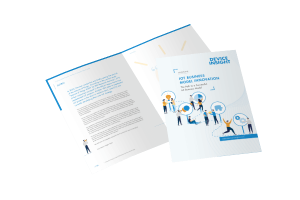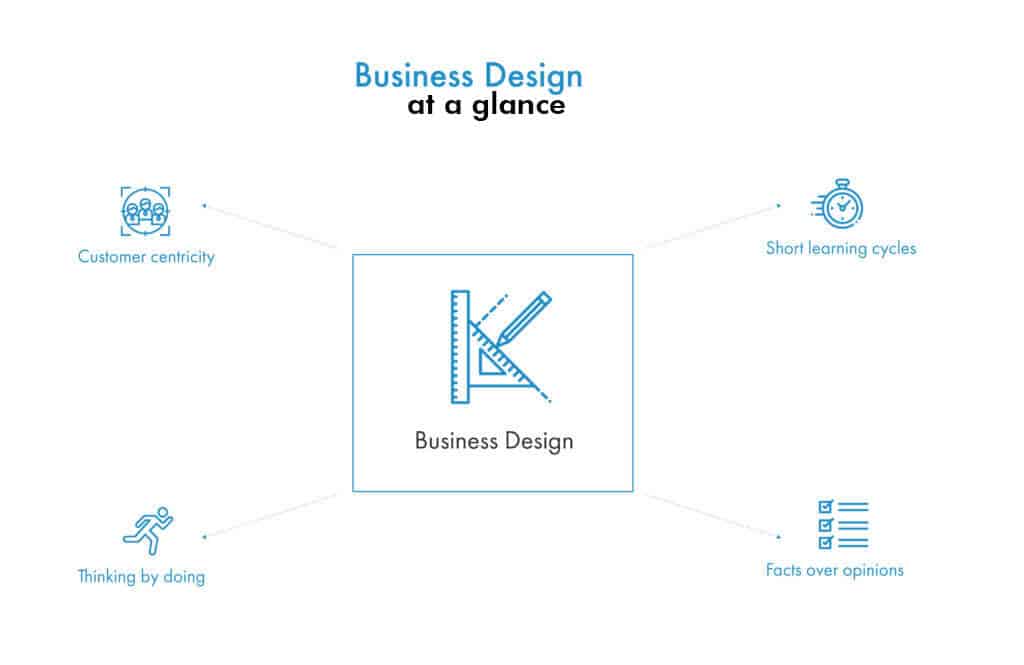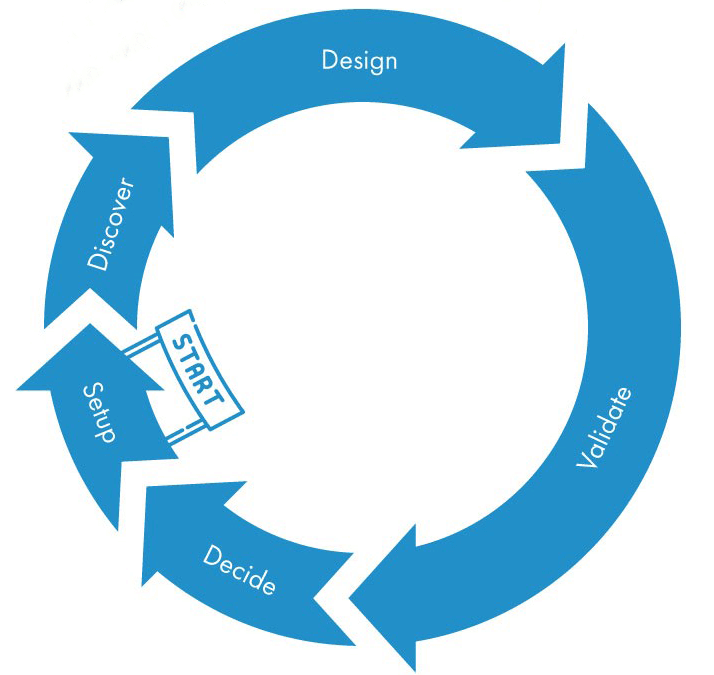Many companies are looking to use the Internet of Things (IoT) to modernize their existing business model or to create completely new services and products for their customers. But how do you proceed and what steps do you have to consider along the path to a successful IoT business model? In our series “Business Model Innovation for the Internet of Things” we will cover this and more. In Part 1 we will take a look at success factors and the business model design process.


Before you start to develop a new IoT business model, you should first make clear which steps and success factors need to be considered. A business idea needs to be well thought out in order to develop into a functioning business model. This is where business model design comes in, combining entrepreneurial and creative thinking to generate added value while always keeping the customer in mind.
Based on our experience, the following four factors are central to successful business model development:

Customer centricity:
The quintessence of good business model design is to develop new business ideas and models in such a way that they always address the “pains” and the needs of potential users and customers. This is why it is important to always take the customer’s perspective and obtain appropriate feedback. Business ideas that leave the customer cold are innovations without a market.
Short learning cycles:
So that innovations are not put on the back burner, it is important to approach a business model design solution in small steps as well as in short learning and test cycles, thus gaining knowledge over the target market bit by bit. The motto is “Think Big, Start Small, Learn Fast”. Sounds simple and plausible. Even today, companies invest large sums of money developing perfect products and services over many years, only to realize afterwards that they are not successful in the market.
Facts over opinions:
Just believing in the success of one’s own business model is not enough; on the contrary, it is extremely risky. Facts, data and figures should therefore be used rather than opinions, for example to validate the future market situation, assess customer behavior and classify test results.
Thinking by doing:
Business ideas cannot be further developed and validated without trial and error and testing. They should therefore be tested in the form of prototypes and service simulations under real conditions. An IoT business model should only be widely deployed once the proof of concept has been provided.

In the Setup phase, the first step is to find an internal sponsor for the project who will act as an advocate for the necessary freedom and resources. In addition, the project and innovation focus must be determined in this phase and essential milestones defined. Last but not least, it is important to set up a project team that is as heterogeneous and interdisciplinary as possible and can devote itself fully to the project.
In the Discover or Exploration phase, it is important to determine the market environment, technologies used and the “pain points” of the respective customers, to discuss them in a team and to generate appropriate learning in short cycles. Team members should exchange information regularly and learn as much as possible about the subject in question.
In the actual Design phase, ideas are finally developed to solve the customer’s pain points. Successful ideas are then translated into concrete business models which are then put to the test in the Validation phase. This requires the development of suitable hypotheses and KPIs from the Design phase.
In the Validation phase, the hypotheses formulated are then tested to validate each individual element of the business model.
Finally, in the Decide or Decision phase, decisions are made in coordination with the internal sponsor. Only here – on the basis of the test results – is the decision made as to which business model should actually be pursued and rolled out.

In our guideline “IoT Business Model Innovation” we guide you step by step on the way to a successful IoT business model


Delivering excellence in IoT. We are an IoT Solution Provider for Smart Products, Connected Vehicles, Smart City, Smart Energy and Smart Production.